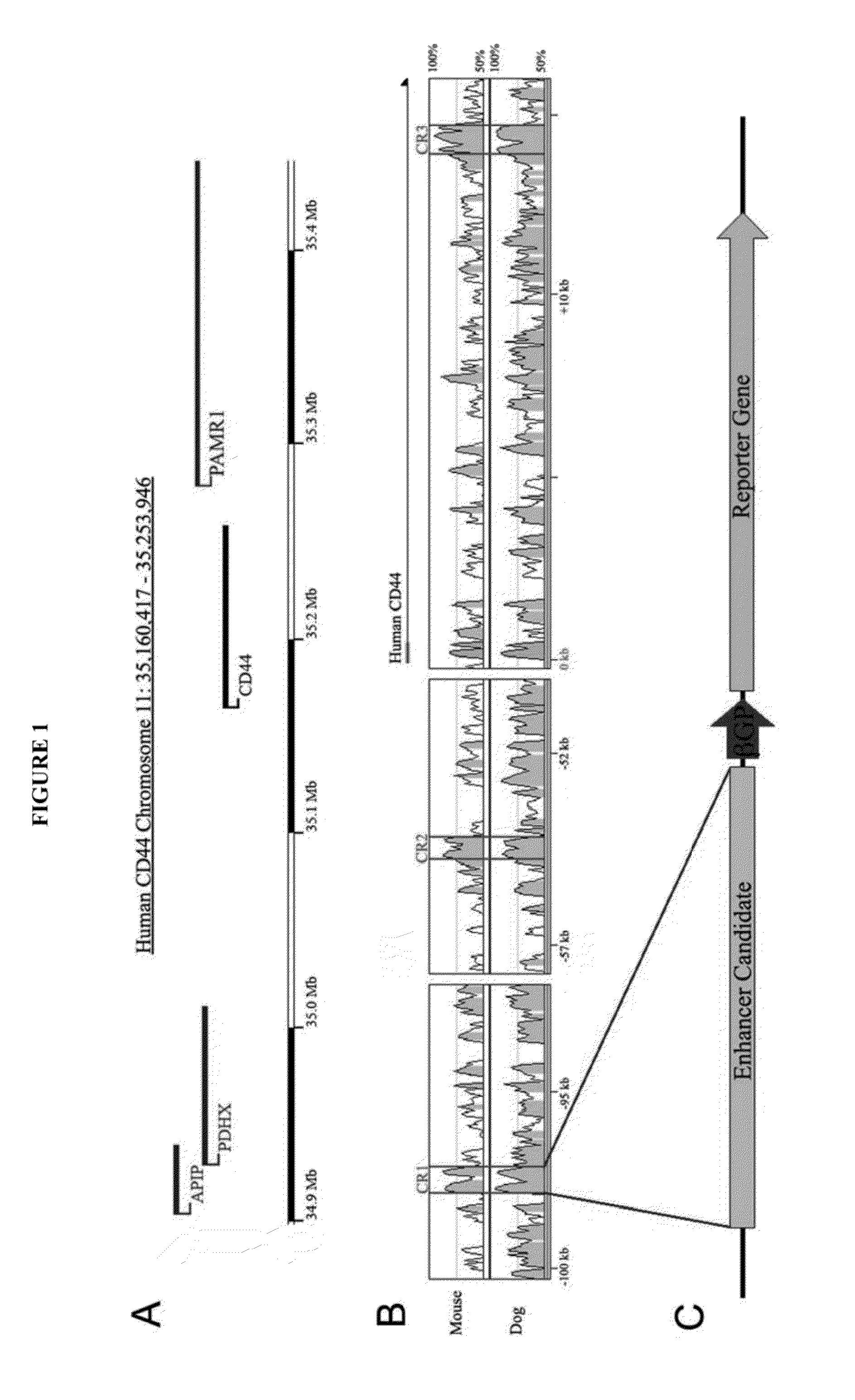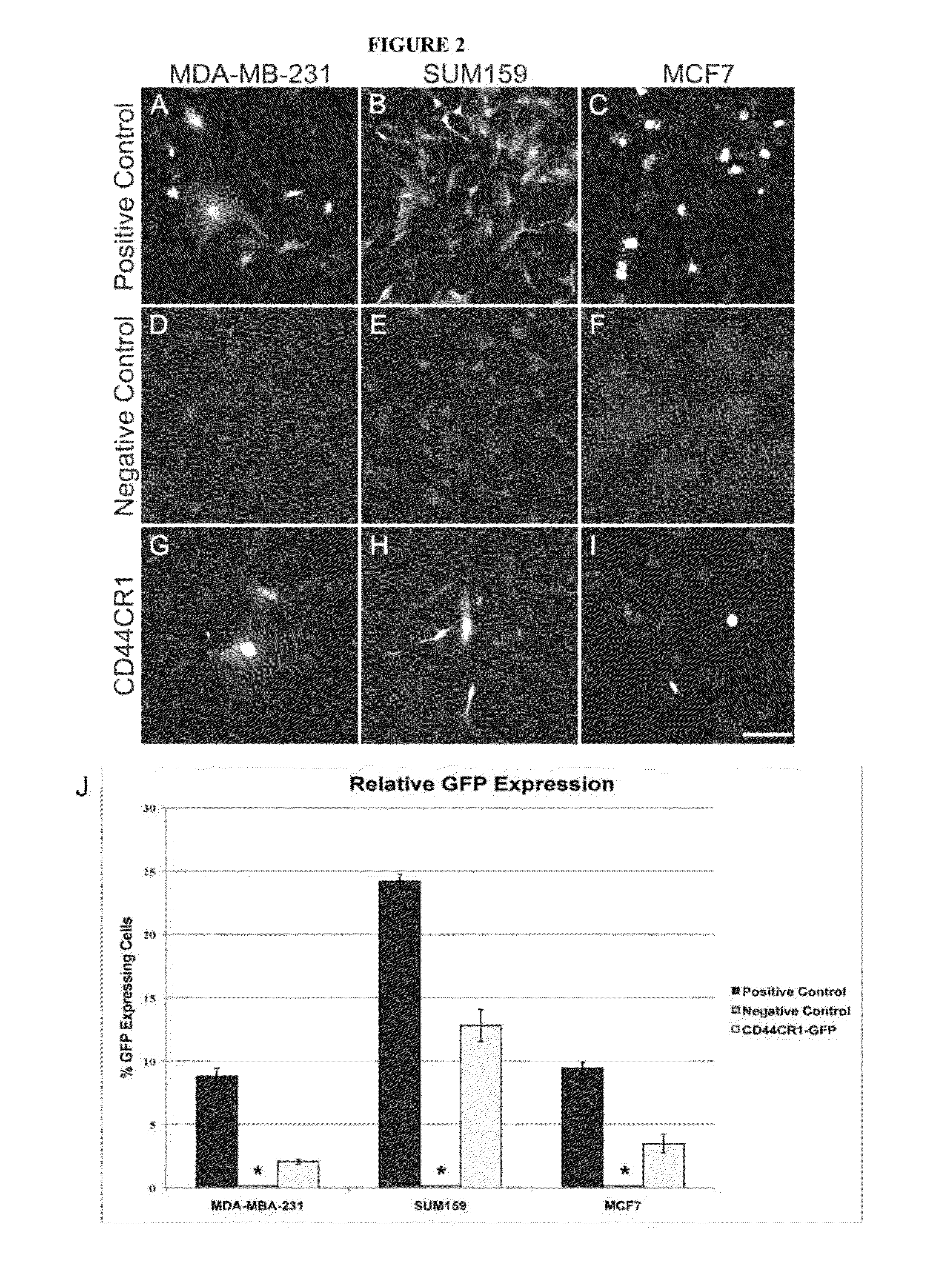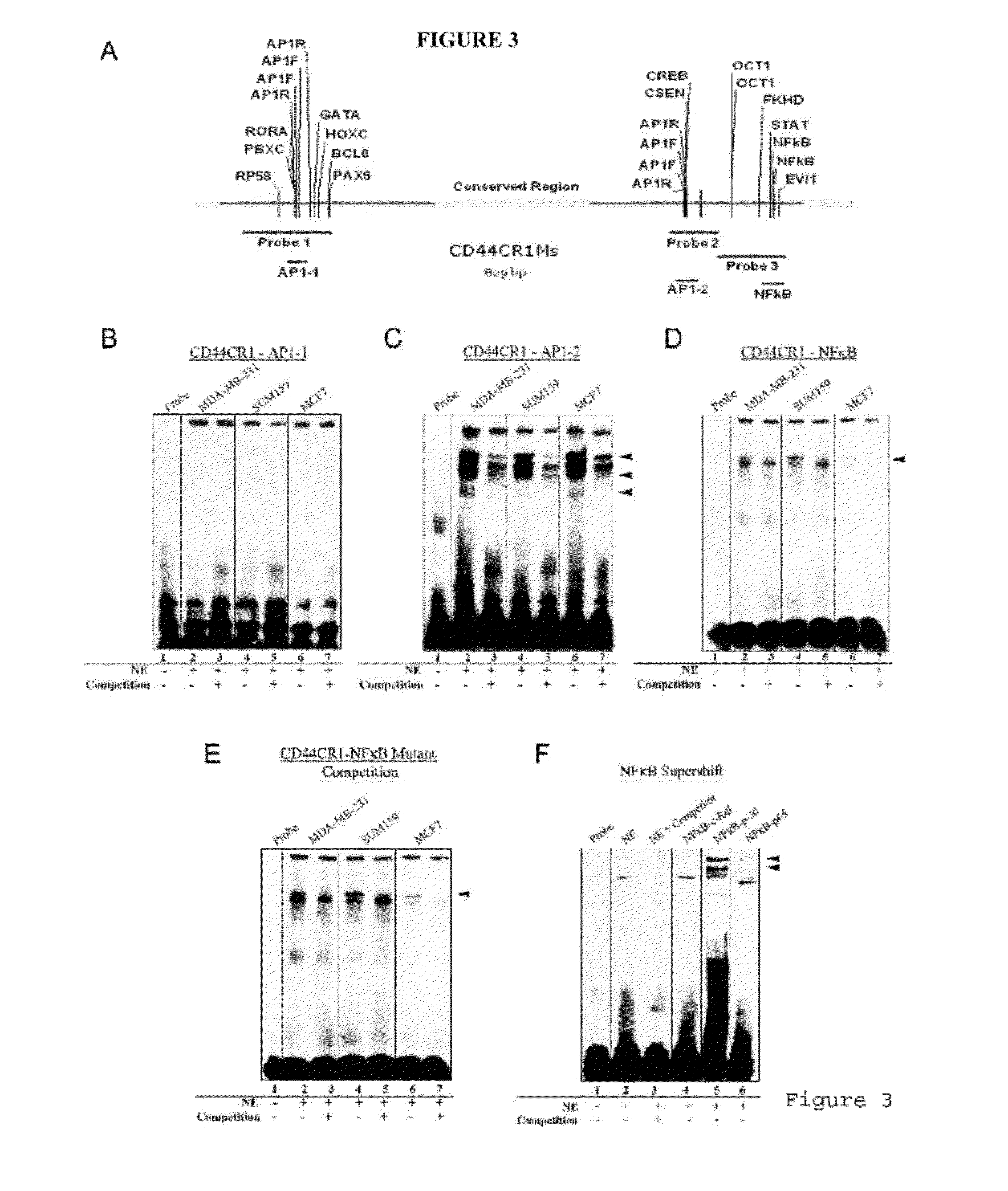Vector and screening assay for cd44 expressing carcinomas
- Summary
- Abstract
- Description
- Claims
- Application Information
AI Technical Summary
Benefits of technology
Problems solved by technology
Method used
Image
Examples
example 1
Prediction of Cis-Regulatory Elements for CD44 Expression Using Sequence Alignment Analysis
[0088]To understand the molecular mechanism of CD44 expression in breast cancer cells, highly conserved regions of non-coding DNA were computationally predicted as cis-regulators of CD44 expression.
[0089]Multiple sequence alignment using the human CD44 genomic region as baseline revealed homologous regions in mouse, dog (FIG. 1A—illustrating a genomic map of the human CD44 and surrounding genes located on chromosome 11p3) and other mammalian species. A total of 14 conserved regions (CR) (>100 consecutive base pairs of sequence with >70% sequence identify) were identified.
[0090]FIG. 1B illustrates the multiple sequence alignment of homologous CD44 sequences and the 14 evolutionarily conserved regions. Conserved regions 1-3 (CR1-CR3) have the highest levels of conservation. Peaks surrounded by the bars are highly conserved regions that have at least 70% conservation among species. These three hi...
example 2
Conserved Regions have the Ability to Direct Reporter GFP Expression in Breast Cancer Cells
[0092]The ability of the conserved regions to direct gene expression was tested using three previously characterized human breast cancer cells, MDA-MB-231, SUM159, and MCF7, each with a different CD44 / CD24 expression profile. These cells were derived from epithelial adenocarcinoma, anaplasitic carcinoma, and epithelial carcinoma, respectively. Both MDA-MB-231 and SUM159 cells contain increased levels of CD44 expression, moreover, SUM159 cells have been characterized with cancer stem cell like features. Thus, these cells provide different lines of validation.
[0093]First, immunofluorescence staining was performed to verify CD44 and CD24 expression levels. Consistent with the genome-wide expression profiling study, MDA-MB-231 and SUM159 cells showed very high CD44 staining and low CD24 staining, while MCF7 showed low CD44 and high CD24 staining (FIGS. 7A-C).
[0094]Then, CD44 and CD24 expression le...
example 3
Analysis of Trans-Acting Factor Binding Sites on the Conserved Regions of CD44
[0096]The ability of the conserved regions to direct different levels of reporter GFP expression among the three cell lines is most likely attributed to their interactions with trans-acting factors. Therefore, CR1-CR3 of both mouse and human were examined for trans-acting factor binding sites (TFBSs) and mutations in these sites. Genomic DNA of CR1-CR3 from each of the cell lines was collected and sequenced to determine if mutations in the region that disrupt TFBSs. Sequencing results show only a 4 bp span that differed between the three human cell lines in CR1 (FIG. 8). This 4 bp difference found in the SUM159 cells showed no disruption of key TFBSs. This indicates that the difference in GFP expression among these cells may not be associated with the DNA sequence. Thus, it is speculated that the difference in GFP expression may be the result of trans-acting factor binding in the cell lines. MatInspector (...
PUM
| Property | Measurement | Unit |
|---|---|---|
| Fluorescence | aaaaa | aaaaa |
| Level | aaaaa | aaaaa |
Abstract
Description
Claims
Application Information
 Login to View More
Login to View More - R&D
- Intellectual Property
- Life Sciences
- Materials
- Tech Scout
- Unparalleled Data Quality
- Higher Quality Content
- 60% Fewer Hallucinations
Browse by: Latest US Patents, China's latest patents, Technical Efficacy Thesaurus, Application Domain, Technology Topic, Popular Technical Reports.
© 2025 PatSnap. All rights reserved.Legal|Privacy policy|Modern Slavery Act Transparency Statement|Sitemap|About US| Contact US: help@patsnap.com



